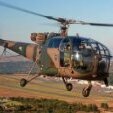-
Posts
459 -
Joined
-
Last visited
-
Days Won
17

F10 replied to red750's topic in US/Canada General Discussion

F10 replied to red750's topic in US/Canada General Discussion

F10 replied to red750's topic in US/Canada General Discussion

F10 replied to planedriver's topic in Aircraft Incidents and Accidents

F10 replied to planedriver's topic in Aircraft Incidents and Accidents

F10 replied to planedriver's topic in Aircraft Incidents and Accidents

F10 replied to Garfly's topic in AUS/NZ General Discussion

F10 replied to Garfly's topic in AUS/NZ General Discussion

